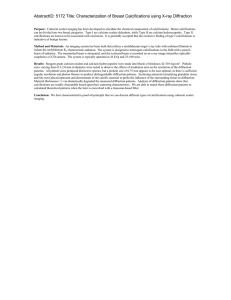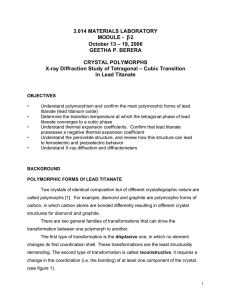Show all work – Homework 4 – Solid State Chemistry
advertisement
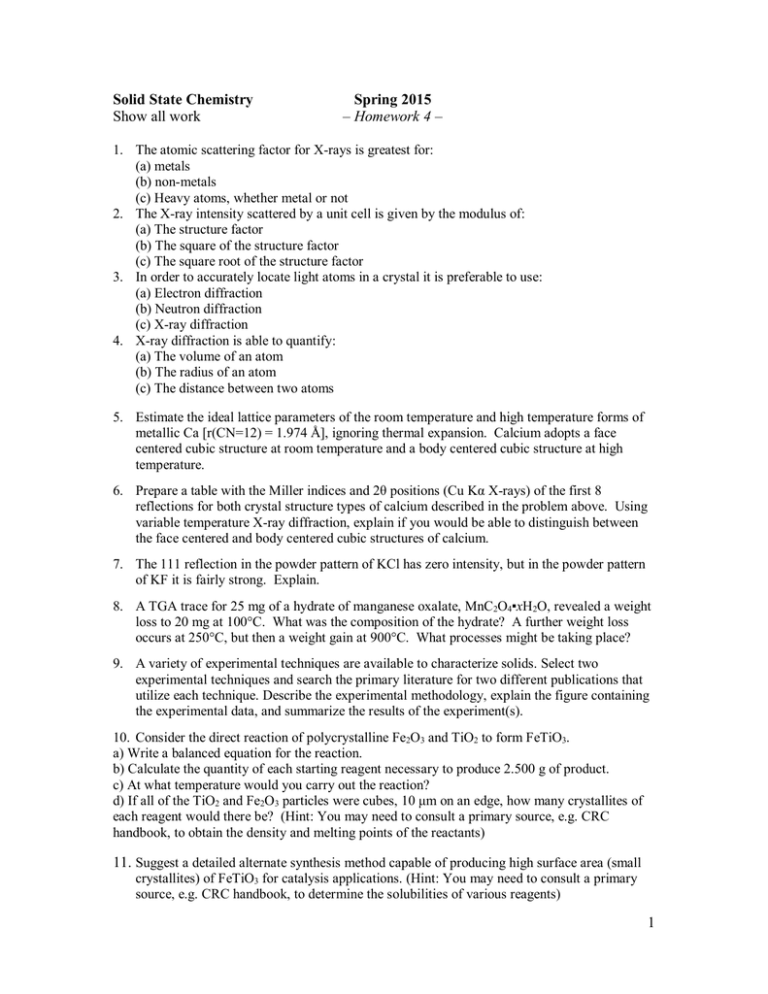
Solid State Chemistry Show all work Spring 2015 – Homework 4 – 1. The atomic scattering factor for X-rays is greatest for: (a) metals (b) non-metals (c) Heavy atoms, whether metal or not 2. The X-ray intensity scattered by a unit cell is given by the modulus of: (a) The structure factor (b) The square of the structure factor (c) The square root of the structure factor 3. In order to accurately locate light atoms in a crystal it is preferable to use: (a) Electron diffraction (b) Neutron diffraction (c) X-ray diffraction 4. X-ray diffraction is able to quantify: (a) The volume of an atom (b) The radius of an atom (c) The distance between two atoms 5. Estimate the ideal lattice parameters of the room temperature and high temperature forms of metallic Ca [r(CN=12) = 1.974 Å], ignoring thermal expansion. Calcium adopts a face centered cubic structure at room temperature and a body centered cubic structure at high temperature. 6. Prepare a table with the Miller indices and 2θ positions (Cu Kα X-rays) of the first 8 reflections for both crystal structure types of calcium described in the problem above. Using variable temperature X-ray diffraction, explain if you would be able to distinguish between the face centered and body centered cubic structures of calcium. 7. The 111 reflection in the powder pattern of KCl has zero intensity, but in the powder pattern of KF it is fairly strong. Explain. 8. A TGA trace for 25 mg of a hydrate of manganese oxalate, MnC2O4▪xH2O, revealed a weight loss to 20 mg at 100°C. What was the composition of the hydrate? A further weight loss occurs at 250°C, but then a weight gain at 900°C. What processes might be taking place? 9. A variety of experimental techniques are available to characterize solids. Select two experimental techniques and search the primary literature for two different publications that utilize each technique. Describe the experimental methodology, explain the figure containing the experimental data, and summarize the results of the experiment(s). 10. Consider the direct reaction of polycrystalline Fe2O3 and TiO2 to form FeTiO3. a) Write a balanced equation for the reaction. b) Calculate the quantity of each starting reagent necessary to produce 2.500 g of product. c) At what temperature would you carry out the reaction? d) If all of the TiO2 and Fe2O3 particles were cubes, 10 μm on an edge, how many crystallites of each reagent would there be? (Hint: You may need to consult a primary source, e.g. CRC handbook, to obtain the density and melting points of the reactants) 11. Suggest a detailed alternate synthesis method capable of producing high surface area (small crystallites) of FeTiO3 for catalysis applications. (Hint: You may need to consult a primary source, e.g. CRC handbook, to determine the solubilities of various reagents) 1
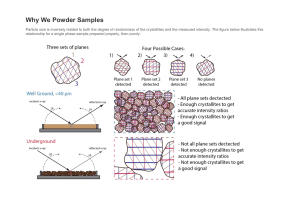
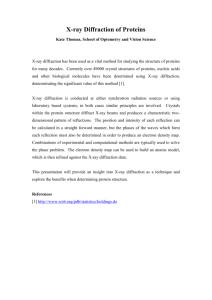


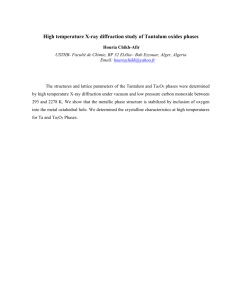

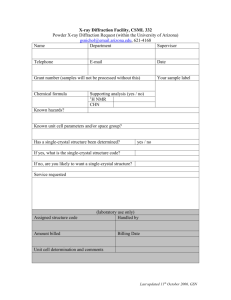
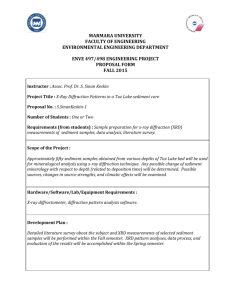
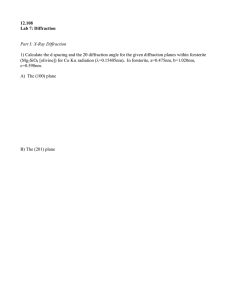
![NanoLab (Phys4970) X-ray Diffraction [ver 2.0] L.A. Bumm/M.B.](http://s2.studylib.net/store/data/018221141_1-18af304ed7aaf90c35852e5ba6391d73-300x300.png)
